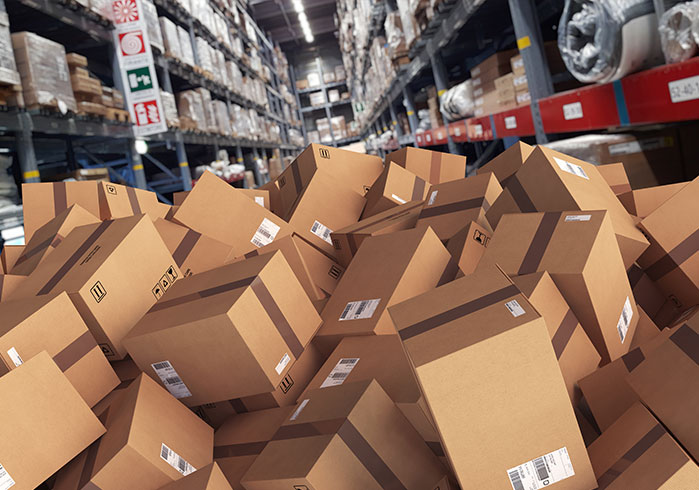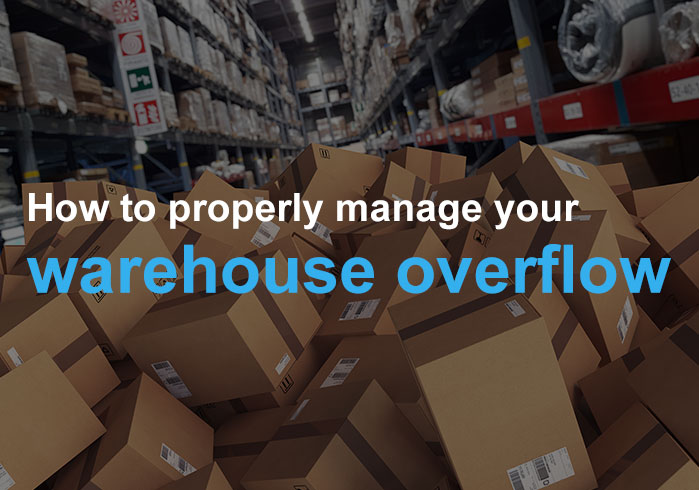
If your company has reached full storage capacity in its warehouses, it likely translates to a hit in terms of productivity. Unorganized or otherwise crowded Isles can impact the efficiency of your Warehouse which then causes your operations to get backed up and can negatively impact your bottom line.
Properly managing the inventory in your warehouse becomes a challenge for any business in this scenario but dealing with it doesn’t have to be. You can handle warehouse overflow quickly and efficiently in such a way that it doesn’t become an ongoing challenge. There are plenty of options out there based on your company’s needs so when you are facing issues with overflowing warehouse aisles, too much stuff, and not enough room in which the store it, consider these solutions:
Controlling inventory
Firstly, you want to consider controlling your inventory more effectively. The whole point of controlling inventory is to better manage all of the items that you have in your warehouse so that you can maximize your profit but minimize the investment you make in the inventory you have. This type of control is referred to as inventory management. Inventory management means managing things like the availability of raw materials, the availability of finished goods, work-in-progress, the different points of inventory reorders, improving bottlenecks, and managing and outsourcing (if necessary) any overflow inventory. Because many warehouses do carry inventory from multiple retailers and manufacturers you have to take into consideration the source of your overflow problems.
Tracking inventory
Tracking your inventory can help as well. Many products get stuck in a warehouse if you don’t properly track them. Workers have to scan all of the items and take account of which items are currently in overflow. Having inventory sitting around lost in storage is not good for your business. You might consider reviewing the current methods you have for tracking products to find where your overflow products are and where you can rectify the situation.
How inventory updates help with overflow
Inventory updates can go a long way toward helping with overflow problems. Irregular overflow updates can help you determine when significant issues are starting to manifest. The problem with most overflow is that it just becomes overlooked but if you have a proper tracking method in place your overflow inventory will still give you updates so that you can review it regularly and find a more permanent home.
Creating overflow locations
If you don’t currently have a designated location in which to store your overflow products, you should create an overflow location. Now that you know what the problem is and how to set up potential long-term solutions you still need to find a place to put it. Designating specific locations to be your overflow location will help you prevent creating cluttered aisles where inventory is everywhere and it will maximize the efficiency of your warehouse by keeping overflow products out of the way.
What shippers can do to mitigate overflow
As mentioned, shippers can do a lot to mitigate potential overflow problems ranging from things like controlling their inventory better, keeping track of what products are being stuck in storage areas, and providing updates to manage that overflow. Shippers can also create new overflow locations.
All of these warehouse overflow problems must be addressed using more than one solution. While there are a handful of things you can do, it’s best to implement one solution at a time. The first strategy that shippers should implement is creating and maintaining a process that helps to manage the overflow. You must be able to recognize when you have overflow problems first and foremost and from there you need to recognize what solutions might help you manage that.
You can achieve this by implementing a strategic inventory plan where you not only get updates about your inventory but you can better track it so that you know where overflow problems exist. That’s where the controlling of inventory, inventory updates, and tracking methods all come into play. These work in tandem and they work most efficiently when you have all of them.
If the inventory flow you have right now is efficient but they’re still an overflow, it might make sense to look at another method for addressing the issue which is working with another warehouse outsourcing company. Plenty of companies use warehouse overflow solutions via third parties and this is where you can create overflow locations if you don’t already have space for them. When you implement all of the other steps and find that everything is well managed but you still need a place to put the overflow, partnering with another warehouse can provide a more cost-effective solution because you won’t have to expand your existing facilities or try to build new warehouses, or even pay rent a nearby building, not to mention the cost of transporting the overflow goods back and forth between the new building.
Working with another company and outsourcing a space in which to store your overflow inventory can save you time, money, and keep you focused on what matters most.
Remember that managing overflow warehouse inventory can be as simple as working with an experienced partner and making sure that you have everything set up to recognize when it’s happening, where it’s happening, and how often it’s happening. This will allow you to work as efficiently as possible, increase your sales revenue, and make the most out of your available space. The last thing you want is to deal with unwanted inventory that isn’t moving, that people have forgotten about, and that is taking up precious space in your warehouse. Implement all of the steps above to start saving more time and money.



One Comment on ““How to Properly Manage Your Warehouse Overflow””
Warehouse Overflow is one of the biggest challenges of warehouse managers in modern times and your article effectively provides a solution to this major problem. I also liked the idea of working with other warehouse companies. Tracking and controlling inventory are two other important points that have been shared by you in this article. Thank you.